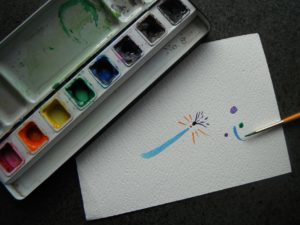She thinks back over her various failed attempts and decides they provide evidence that she should never trust again.
“He said that, but once we got close, he changed.”
“He did that, but once I moved in, he stopped.”
“We committed to x, but then he decided he’d rather have y.”
“See? Men can’t be trusted!”
She reads posts about con men, psychopaths, users, liars and cheats. She finds more reasons to never trust again.
But she has a son. She can’t go around thinking the worst of men. She lives with a prime example of all the good that can be male. She bites her lip when she starts to say something disparaging about the opposite sex. She doesn’t want her daughter to adopt her attitude about men.
The three of them talk of life, love, relationships, fishing, ice skating and the cat’s shenanigans. They do not have many secrets. Most families don’t discuss the things they discuss. She’s a firm believer in communication. She fesses up to her messes and never sweeps anything under the rug.
When she wants to talk with them about relationships and trust, though, she stumbles. Her track record is a wikiHow entry of what not to do in the romance arena.
What can she tell them about trust? How can she teach them to give another a chance? How can she protect them? Are they doomed to make the same kinds of mistakes that she has made?
What is trust, anyway?
Is trust the ability to believe what another says? Does trust happen only when we show our true self, and have that completely accepted? How could she ever take that leap again? Is trust simply having faith in the promises made by another? When we trust, don’t we have expectations about behavior? Is that fair?
But when is trust established? At the six month mark? On the third date? Is it a gut feeling? Is it a vibe? How can she know, without a doubt, that she can trust another?
When does trust begin?
Where does trust begin?
Could her kids trust her to not make another scary choice in the relationship department? Is it enough to say, “Never again?”
Is that the kind of example she wants to set for her kids? Should she show them that it’s better to never try again than to risk trusting, and perhaps failing?
Can she trust herself?
That is the real question.
Can she trust herself to not settle? Can she trust herself not to put up with being treated poorly? Can she trust herself not to put herself in another situation where she is taken for granted? Can she trust enough in her own goodness to believe that she deserves better, even if being alone is the better she’s been looking for.
She writes out the questions until she finds the answer:
She cannot learn to trust another until she can learn to trust herself.


